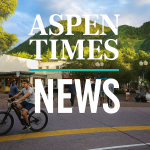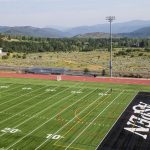Nearly 35,000 empty vehicle seats pass through Aspen daily
Firm releases new Castle Creek Bridge traffic data

The Aspen Times archives
A transportation consulting firm estimated last week that 34,500 empty vehicle seats entered and exited Aspen daily in early August.
Fehr & Peers collected data on Tuesday, Aug. 5, and Wednesday, Aug. 6, to present to the “Transportation Coalition of the 21st Century,” a local group consisting of government officials and community leaders. The average two-way daily traffic volume over the period was 26,468 vehicles, with an average of 13,738 vehicles traveling east daily and an average of 12,731 vehicles traveling west daily.
The firm estimated that there were 1.4 passengers per vehicle between 7:30 and 9:30 a.m. in both directions, with trucks seeing higher inbound occupancy than outbound.
“Extrapolating the average vehicle occupancy data over the entire day, we estimate that there are about 34,500 empty vehicle seats entering and exiting Aspen (69,000 in both directions) each day,” the firm stated in a memo to the transportation coalition.
Aug. 5 saw its heaviest traffic in both directions around 12:15 p.m while Aug. 6 saw its heaviest traffic around noon. Eastbound traffic was heaviest around 11:15 p.m. Aug. 5 and noon Aug 6. Westbound traffic was heaviest around 1:30 p.m. Aug. 5 and 5:30 p.m. Aug. 6.
The 26,468 early-August daily average collected by the firm is roughly 4.1% above the August average between 2001 and 2021 for vehicles passing the Cemetery Lane-Highway 82 intersection, according to the city. The data collected by Fehr & Peers, however, represents just two days in August, not a monthly average.
The new data comes as the Roaring Fork Transportation Authority attempts to incentivize public transit this fall. The authority will offer a “Zero Fair October & November” pilot program, offering free rides for the two-month period. RFTA hopes the pilot will reduce the total number of cars on the road by making local public transit more equitable.
“The fuller our buses are, the more efficient they are in moving more people,” RFTA Public Information Officer Jamie Tatsuno told “The Aspen Times” last month, “and (the) less cars driving up and down our highways.”
Skyler Stark-Ragsdale can be reached at 970-429-9152 or email him at sstark-ragsdale@aspentimes.com.
RESULTS: Runners, bikers tackle annual Grand Traverse races between Aspen and Crested Butte
The Grand Traverse returned — and promptly departed — Aspen this weekend, with Saturday’s trail run and Sunday’s mountain bike race.
Most expensive house for sale in America hits Aspen market
The most expensive house for sale in the country hit the housing market in Aspen last week, a 74.1 acre property listed at $300,000,000.










